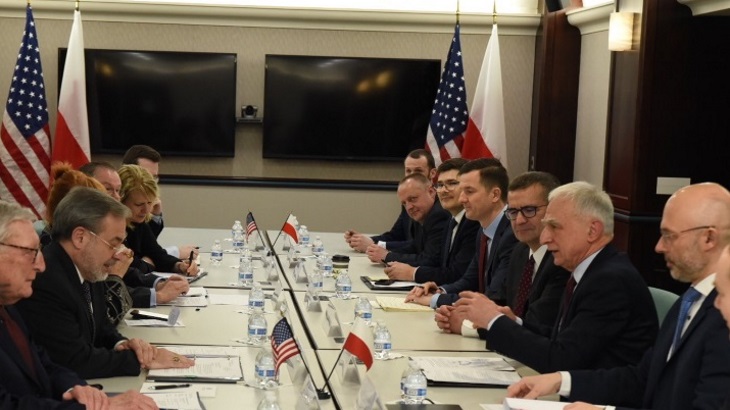Following Naimski's signing of an intergovernmental agreement in October with Dan Brouillette, the then US secretary of energy, Brouillette reportedly told journalists that Poland had agreed to spend USD18 billion on US nuclear technology and services from companies such as Westinghouse, Bechtel and Southern Company. Poland plans to spend USD40 billion on six nuclear reactors, Brouillette said.
In yesterday's interview with TOK FM, Naimski said preparation of the US offer to build new nuclear power units would be "100% financed by the American side", adding that "it will be up to our government to consider it and accept it".
The European Atomic Energy Community (Euratom) had been notified of the intergovernmental agreement, he said. "This is a parallel Community structure for the EU in Europe, to which we belong, just like all the countries of the European Union. All the steps that we are taking are and will be in line with European regulations," he said.
Poland's Energy Policy for 2040 (PEP2040) is based on three pillars: a just transition; a zero-emission energy system; and good air quality. The first 1-1.6 GWe nuclear unit is to be commissioned in 2033, with five more units, or 6-9 GWe, to follow by 2040. They are expected to be built at Lubiatow-Kopalino and Zarnowiec, near the country's Baltic Sea coast.
Naimski confirmed that Poland plans to build six nuclear units by 2043.
"These are very serious financial burdens," he said. "But you have to realise that we will have to raise this money for 20 years, or maybe PLN4 billion a year. And I dare say that our state can afford such an investment and can afford such an effort."
Reliant on coal-fired power and imported gas, Poland's energy sector is in the process of transformation, he said. "Our basic premise is that Poland must remain sovereign when it comes to electricity production," he said. "What will go away over time must be replaced with new sources."
These new sources are from renewable energy, including offshore wind, but this must be built in parallel with reliable power plants, and that means nuclear energy, he said.
In an interview with Polska Times on 26 February, Polish Minister of Climate and Environment Michał Kurtyka said moving away from fossil fuels to cleaner sources of power will cost the country an estimated PLN450 billion (USD120 billion) by 2045. But Poland's coal plants are ageing, and so the country is entering "a natural cycle of renewal" of its electricity generation capacity, he added.
"We plan to open six nuclear units between 2033 and 2043. Every two years or so, we would open one power unit. Depending on the choice of technology, it will be between 6000 MW and 9000 MW," he said. "One uranium pellet weighing seven grams gives you as much energy as a tonne of carbon. This shows what an environmental burden it is to obtain natural resources in Poland. Two out of every three litres of water in the country is used by the energy and fuel sector.”
Nuclear power plants require access to a large amount of water, he said, and so the Baltic Sea coast "seems the most natural" location for them. The government hopes to make a decision on the reactor design this year, followed by the preferred site selection in 2022, he added.





_18570.jpg)
_16159.jpg)
_18938.jpg)
_33584.jpg)





